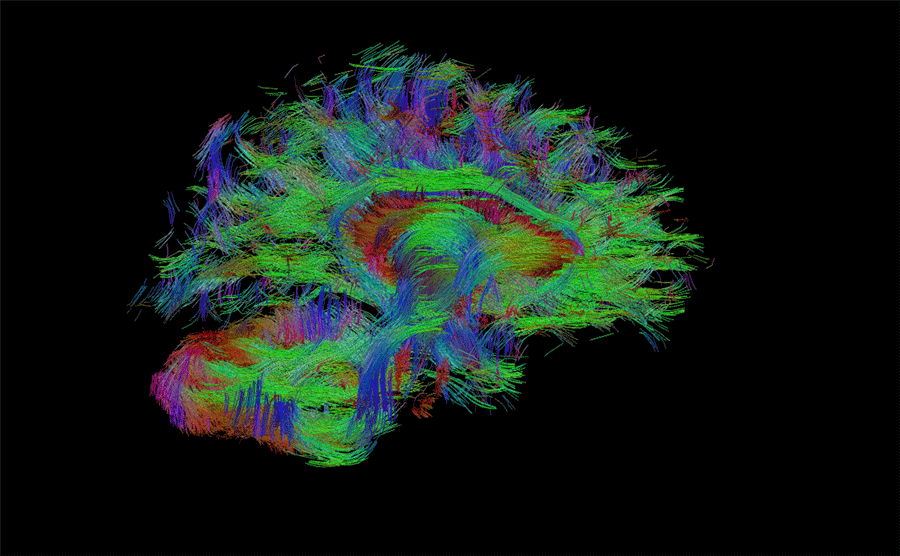We study how the brain develops and changes with experience. This page will help you learn more about the brain and what it would be like to participate in our brain research.
How is the brain structured and how does it work?

The brain is composed of billions of specialized cells called "neurons." These neurons use electrical signals (called "action potentials") and chemical signals (called "neurotransmitters") to communicate with one another and respond to information. The brain is folded so that more can fit inside the skull. It only weighs about three pounds, yet this small organ is what enables each of us to think, feel, and move. Brain research has identified distinct structures in the brain, each of which is specialized to perform different tasks and functions. There are four main regions, or lobes, in the brain:

These brain regions (and all of the smaller regions within each lobe) communicate with each other, forming connections. Connections within the brain change with your own experience. These brain regions and their connections are how we learn, how we develop, how we become different people, and how we recover from injury.
Dr. Saygin speaks with Dr. B about development and emotions
Video courtesy of WOSU and QED with Dr. B
How does the brain work?
How does your brain help you remember things?
Video courtesy of graduate student researcher Athena Lee Howell
What technology can we use to learn about the brain and help treat disorders of the brain?
Video courtesy of graduate student researcher Fiona Molloy
How does the brain see faces?
Video courtesy of graduate student researcher Jin Li
How does the brain enable learning?
Video courtesy of undergraduate student researcher Kyle Moon
How does damage to the brain affect our ability to express or understand language?
Video courtesy of undergraduate student researcher Yasemin Gokcen
How is your brain responsible for optical illusions?
Video courtesy of graduate student researcher Heather Hansen
How does the brain develop language?
Video courtesy of graduate student researcher Kelly Hiersche
A Day in the Lab
Brain research has allowed us to learn about the structure and function of the brain. You can help us learn more about the brain, like how it develops and changes with experience, by participating in our research studies. What happens when you come to our lab?
Ever heard of MRI? MRI stands for "magnetic resonance imaging," and these scanners use a magnet to take pictures of structures inside the body. Our lab uses an MRI scanner to take pictures of your brain. These scans provide pictures of your brain structure (MRI), how your brain functions during different tasks (fMRI, or "functional magnetic resonance imaging"), and what connections exist in your brain (DTI, or "diffusion tensor imaging"). Watch below to see what it will be like when you come to our lab for a brain scan.
To take part in our research (or to learn more about ongoing research), click here.